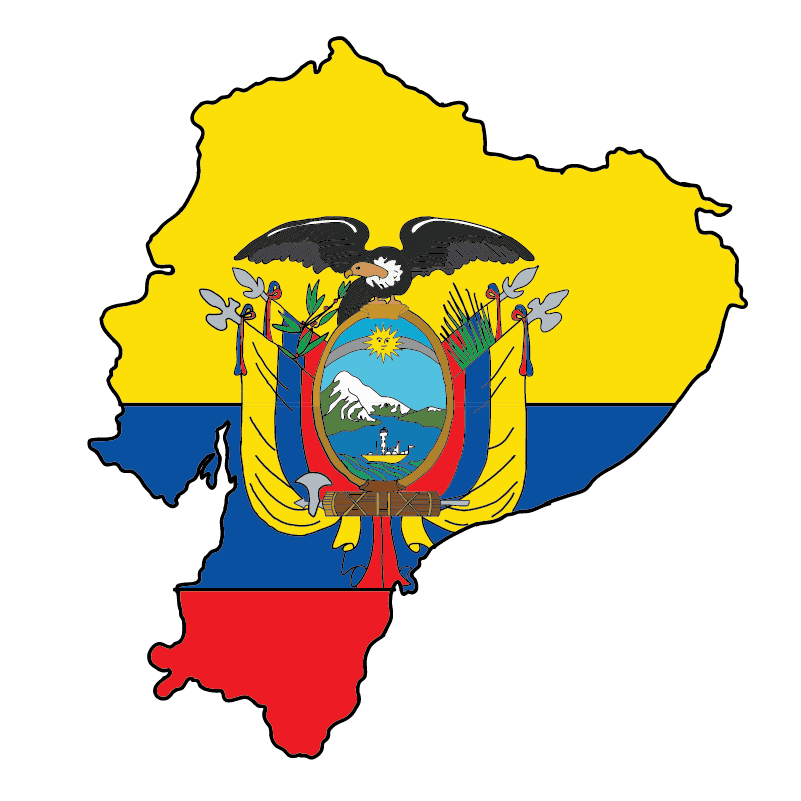Ecuador is a country that is famous for its roses. The country’s climate and elevation have created the perfect environment for roses to grow and flourish. In reality, Ecuador exports more than 30% of the world’s roses, ranking among the top exporters in the world. The history and culture of the rose in Ecuador can be traced back to its introduction in the 19th century. Over time, the rose industry in Ecuador has grown and evolved. New varieties of roses have been developed, and new techniques for growing and preserving roses have been discovered. Today, florists and customers all over the world value Ecuadorian roses for their extraordinary quality and beauty.
While the rose industry in Ecuador holds economic significance, its rich cultural history remains largely unnoticed by many. This article delves into the captivating narrative behind the significance of roses in Ecuadorian culture. It also offers valuable insights into the distinctive cultivation conditions and methods that set Ecuadorian roses apart.
Historical Roots
Roses were introduced to Ecuador in the early 1800s by European settlers. They were initially grown for ornamental purposes in private gardens. However, as the demand for roses grew, farmers began to cultivate them on a larger scale. The rose industry in Ecuador began to take off in the 1960s. The country’s favorable climate and high altitude made it an ideal location for growing roses. As the industry grew, it became a major contributor to the country’s economy, providing employment opportunities for thousands of people.
Cultural Significance
Roses have become an important part of Ecuadorian culture. They are used in religious ceremonies, weddings, and cultural celebrations. They are considered a symbol of love, friendship, and beauty. The country even has a festival dedicated to roses, known as the “Fiesta de las Flores y las Frutas” (Festival of Flowers and Fruits). Ecuadorians have been cultivating roses for more than 50 years, and the country is now one of the largest producers and exporters of roses in the world.
For example, during the Day of the Dead festival, people decorate graves with roses as a way of honoring their deceased loved ones. Roses are also used in weddings, where they symbolize love and commitment.
Ecuadorian roses are known for their high quality and unique colors, which are a result of the country’s ideal climate and altitude. The roses are grown at high altitudes, which results in longer growing cycles and larger blooms. This makes them perfect for use in floral arrangements, and they are highly sought after by florists all over the world.
Overall, roses have become an integral part of Ecuadorian culture, and they continue to be an important part of the country’s economy.
Economic Impact
In addition to their cultural significance, roses have also played an important role in the country’s economy. Roses are Ecuador’s third-largest export, generating $837 million in business in 2013. The industry employs over 100,000 people, with the majority of the workforce consisting of women. Ecuador is known for producing high-quality roses, primarily exported to the USA, Europe, and Asia.
Ecuador’s rose industry has been growing steadily over the years, with the country now being the third-largest exporter of cut flowers in the world. The European market is also a significant market for Ecuador’s roses, with countries like the Netherlands, Germany, and the United Kingdom being major importers. Asia is another growing market for Ecuador’s roses, with countries like Japan, China, and South Korea importing large quantities of Ecuadorian roses.
Ecuador’s comparative advantage in the production of roses is due to its ideal climate and altitude. The country’s rose farms are located in the Andes Mountains, at an elevation of about 10,000 feet above sea level. This location provides the ideal growing conditions for long and straight roses.
While the majority of Ecuador’s roses are exported, there is also a growing domestic market for roses. The country’s middle class is growing, and with it, the demand for roses. Ecuadorians use roses for special occasions such as weddings, birthdays, and anniversaries. Additionally, roses are used in the production of essential oils, perfumes, and other beauty products.
In recent years, there has been a trend towards sustainable and organic rose production in Ecuador. Many rose farms are now using environmentally friendly practices, such as reducing the use of pesticides and using natural fertilizers. This has led to an increase in demand for organic roses, both domestically and internationally.
ARTISTIC & LITERARY INFLUENCE
Roses hold a profound influence in the art and literature of Ecuador, symbolizing both the country’s natural beauty and its rich cultural heritage. Ecuador’s abundance of roses has become a prominent muse for artists and writers alike. In literature, roses often feature as a metaphor for love, passion, and the nation’s vibrant spirit. They have appeared in the works of renowned Ecuadorian authors such as Jorge Enrique Adoum and Juan Montalvo. In art, Ecuadorian artists such as Vlad Tasoff, often blend vibrant rose hues and delicate petals into their artworks. They capture the essence of the country’s landscapes and emotions. The influence of roses in Ecuador’s artistic and literary traditions reflects the deep connection between nature and culture in this enchanting South American nation.
Roses in Ecuador
Ecuador is home to a wide variety of roses, thanks to its ideal climate and geography. The country’s rose industry is renowned for producing some of the finest and most diverse roses in the world. Here are some of the most popular rose varieties grown in Ecuador:
- Freedom Roses — Freedom roses are one of the most popular varieties of roses grown in Ecuador. These roses are known for their large, vibrant blooms and long, sturdy stems. They come in a range of colors, including red, pink, yellow, and white, and are often used in bouquets and floral arrangements.
- Explorer Roses — Explorer roses are another popular variety grown in Ecuador. These roses are known for their unique, bi-color blooms, which feature a contrasting color on the edges of the petals. They come in a range of colors, including pink, yellow, and orange, and are often used in wedding bouquets and centerpieces.
- High and Magic Roses — High and Magic roses are a hybrid variety grown in Ecuador. These roses are known for their large, ruffled blooms, which come in a range of colors, including pink, red, and yellow. They are often used in floral arrangements and as a gift for special occasions.
- Black Baccara Roses — Black Baccara roses are a unique variety grown in Ecuador. These roses are known for their deep, dark red color, which almost appears black in certain lighting. They are often used in Gothic-style floral arrangements and as a gift for Halloween or other spooky occasions.
- Red Intuition Roses — Red Intuition roses are a relatively new variety grown in Ecuador. These roses are known for their deep, velvety red color and large, symmetrical blooms. They are often used in romantic floral arrangements and as a gift for Valentine’s Day or other special occasions.
Conclusion
The rose industry in Ecuador has a rich history and culture that has made it a leader in the global market. The country’s favorable climate, high altitude, and volcanic soil provide the perfect conditions for growing long-stemmed roses with big heads. Ecuador’s rose farms are located in the Andes Mountains, at an elevation of about 10,000 feet, which is ideal for growing roses. The industry has also benefited from the country’s favorable trade policies, which have made it easier to export roses to other countries.
The Ecuadorian rose industry has undergone significant changes over the years. The industry has shifted from traditional rose production to more sustainable practices such as organic farming and fair trade. This has helped to improve the working conditions of the farmers and workers in the industry. It has also helped to reduce the environmental impact of rose production.
The industry has faced challenges such as competition from other countries and the impact of climate change. However, the industry has been able to overcome these challenges through innovation and the adoption of new technologies. The industry has also been able to diversify its product offerings by introducing new varieties of roses such as preserved and garden roses.
In conclusion, the Ecuadorian rose industry has a rich history and culture that has made it a leader in the global market. The industry has undergone significant changes over the years but has been able to overcome challenges through innovation and the adoption of new technologies. The industry’s commitment to sustainability and fair trade has helped to improve the working conditions of farmers and workers in the industry and reduce the environmental impact of rose production.
Roses Originating In Ecuador
The Rose Directory website library catalogues roses from around the world. If there are any roses originating from this country, you can find a clickable list to explore below. If there are no roses listed, don’t worry – we will continue to add more roses to the catalogue in the future and more may appear then.
No roses found.
EXCLUSIVE Ecuador COLLECTION
Visit Store
From Clothes & Apparel To Home Décor & Accessories. Free Returns. Unique Designs. Worldwide Shipping.
